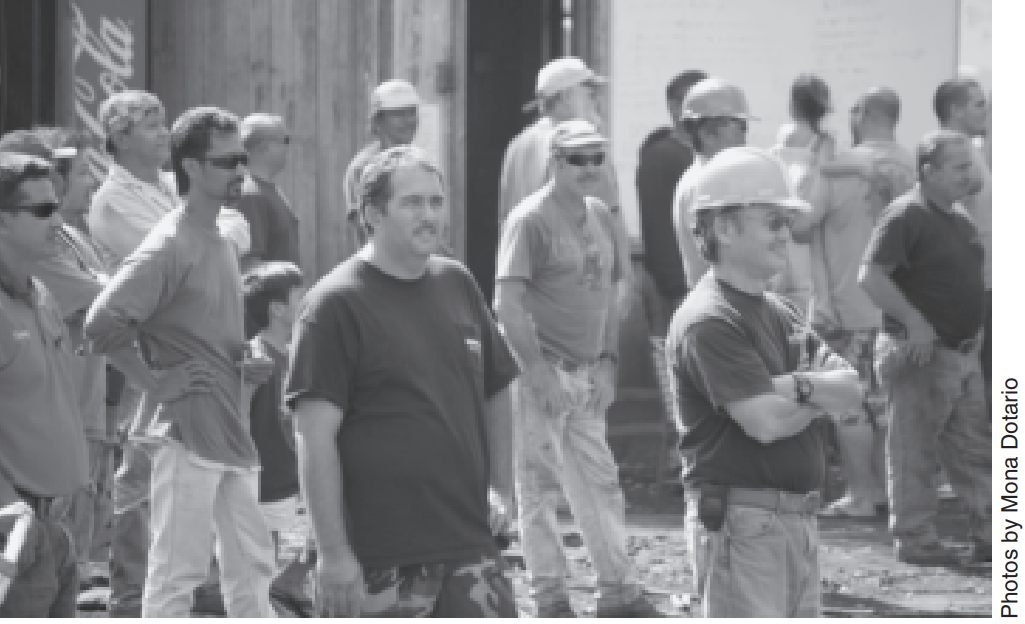After 120 years of growing sugar on Kauai, the Gay & Robinson Company hauled its last load of sugar cane from the fields to the mill on October 30, 2009. The cane haul trucks paraded from the Makaweli Post Office through the town of Waimea, followed by trucks and cars of employees.
About 130 ILWU members remained on the payroll until November 25, 2009.
A handful of ILWU members will continue to work for Gay & Robinson, producing electricity at the company’s hydroelectric plant.
ILWU members and retirees living in plantation housing operated by Gay & Robinson are not immediately affected by the shutdown of sugar operations. The housing and rental rates are set by collective bargaining between the union and company.
Twenty years ago, there were four sugar companies on Kauai which employed over 1200 workers--Gay and Robinson, Kekaha Sugar, Olokele Sugar, and Lihue Sugar.
HC&S on Maui, which employs about 750 ILWU members, is the last remaining sugar company in Hawaii. HC&S is also fighting for its survival as a bad decision by the State Water Commission could cut off its supply of water.
Sugar Was Big
When the ILWU first unionized sugar workers from 1944 to 1945, there were 33 plantations, with 25,000 workers. Most of the workers were in the fields, cutting cane by hand. Mechanization greatly increased productivity, and by 1970, less than 10,000 workers were producing more sugar than the 25,000 workers in the 1940s.
Through collective bargaining, ILWU sugar workers earned higher wages and better benefits then any agricultural worker in the US or world, but Hawaii sugar companies could still compete with sugar coming from countries where workers were paid less than one dollar a day
Hawaii had the advantage of the most advanced sugar technology in the world. Years of research by the Hawaii Sugar Planters Association, some funded by public money, produced high yield cane varieties, efficient cultivation methods such as drip irrigation, and specialized machinery for planting and harvesting
Hawaii sugar plantations routinely produced double the average yield of sugar companies in Texas, Louisiana, or Florida and many times higher than foreign sugar companies.
In the 1970s, the five corporations which owned Hawaii’s sugar industry were flush with cash. They developed resorts and commercial properties, bought companies on the mainland, or expanded their sugar and pineapple operations to other countries.
Decline of Sugar
C. Brewer/International Utilities, actively sold its sugar technology and service as a sugar consultant to foreign countries. Castle and Cooke (Dole Foods) expanded to the Philippines and Thailand.
Hawaii began losing its technological advantage as foreign sugar companies began using the same cane varieties, cultivation techniques, and machinery, while paying their workers a fraction of the wages paid in Hawaii.
In 1994, the passage of the so-called free trade agreements with Canada and Mexico, began to open the US market to foreign produced sugar. Between 1994 and 2000, eleven Hawaii sugar companies decided it was time to quit the business and over 2,500 ILWU members lost their jobs. The companies are: Hilo Coast Processing Company (1994 - 300 union jobs); Mauna Kea Agribusiness (1994 - 100 jobs); Hamakua Sugar (1994 - 530 jobs); Oahu Sugar (1995 - 275 jobs); Wailuku Ag (1995 - 70 jobs); Ka‘u Sugar (1996 - 250 jobs); Waialua Sugar (1996 - 300 jobs); McBryde (1996 - 100 jobs); Pioneer Mill (1999 - 150 jobs); C&H Refinery (50 jobs); and Amfac Kauai (2000 - 400 jobs).
Only the most efficient, well financed, and best managed sugar companies could compete and survive in these conditions. It would also take luck as bad weather could also take down a plantation.
Gay & Robinson held on until the end of 2009, a victim of high gas prices in 2008, the financial and credit crisis of 2009, and the uncertain economics of ethanol production.
Sugar Prices Hit High
In January 2010, the price of raw sugar jumped to 29 cents a pound, the highest since 1981 (29 years ago). Bad weather in Brazil and India, the two largest producers of sugar, resulted in poor crops. This means less sugar is available while consumption of sugar increases in India and China.
Some sugar analysts predict raw sugar could reach 40 cents a pound.

The last harvest ended with a parade of cane trucks and workers that began in Pakala and traveled through Waimea, Kaumakani and Hanapepe before returning to the mill in Kaumakani

Pick-up trucks bore the names of plantation departments and shops and the words “Sweet Memories.” Workers and family members watch the last cane being unloaded at the mill
Rudias to replace Raposas on International Executive Board
Kelly Rudias, an ILWU member from HC&S Maui, will replace Aurora Raposas as the sugar grouping representative on the ILWU International Executive Board.
Raposas, from Gay & Robinson on Kauai, was originally elected and confirmed at the first International Executive Board meeting on October 15-16, 2009. Since then, Gay & Robinson terminated its sugar operations, Raposas was laid off, and Kauai no longer has a sugar grouping. The remaining ILWU members at Gay & Robinson will form a new unit under General Trades.
Local 142 sugar delegates who attended the International Convention in June 2009 knew Gay & Robinson would shut down and selected Rudias as an alternate. The Local 142 Executive Board approved this replacement on December 18, 2009.
HC&S, will replace Rudias as the sugar grouping representative on the Local Executive Board. The appointment was made by the Titled Officers and confirmed by the Maui Division Executive Board. Rudias, as a member of the International Executive Board, will continue to attend meetings of the Local Executive Board as an observer.

Kelly Rudias from HC&S Maui.
Sugar transformed Hawaii
Early polynesian settlers brought “ko” (sugar cane) to Hawaii and used the juice to sweeten herbal medicines and to treat cuts.
A Chinese sugar miller is credited with producing the first crystallized sugar in 1802 on Lanai. He brought his milling stones and boilers with him and produced a small amount of refined sugar and molasses. He returned to China, but this process of crystalizing sugar continued to be used to make small batches of the sweetener
Ladd and Company established the first commercial plantation at Koloa, Kauai in 1835 and produced enough sugar to export 8,000 pounds to the U.S. in 1836. There was a strong and growing demand for sugar from the U.S.
After 1850, the Great Mahele turned land into private property which was divided among the Hawaiian people, with most of the land going to the royal families. Foreign residents were allowed to buy land and missionary descendants and American businessmen quickly capitalized on the opportunity. They bought land from the Hawaiians and started sugar plantations on every island, but they couldn’t get enough workers from the local population of Hawaiians.
The sugar growers organized the Hawaii Sugar Planters Association to recruit temporary contract workers from around the world.
Tens of thousands of Chinese were brought to Hawaii. Then Japanese, Portuguese, Koreans, and Filipinos were recruited to work on the plantations. Most returned to their home countries, but many stayed and intermarried, creating the “melting pot” of ethnic groups unique to Hawaii.
Five companies gained control of nearly all the sugar plantations which generated tremendous wealth for their owners, which led to political power, and the motivation to overthrow the Hawaiian Kingdom, and annexation to the United States in 1898.
